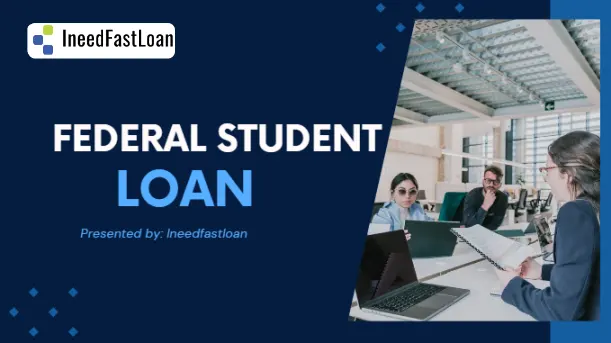Details of the Federal Student Loan On-Ramp and SAVE Plan

Explore the details of the Federal Student Loan On-Ramp and SAVE Plan, designed to simplify student loan management, enhance affordability, and support borrowers through flexible repayment options and debt forgiveness. Discover how these initiatives aim to make higher education more accessible and manageable for everyone.
The realm of higher education in the United States is often intertwined with the complexities of student loans. For many, the pursuit of higher education is not just an aspiration but a necessity for personal and professional growth. However, the financial burden associated with it can be daunting.
Recommended: How to You Can Get Unisa Student Loan Approvals
This is where federal student loans come into play, offering a lifeline to students who might otherwise be unable to afford college or university education. The Federal Student Loan On-Ramp and SAVE Plan are two initiatives that aim to provide structured pathways and support mechanisms for borrowers to manage their student loan debt more effectively.
Understanding the Federal Student Loan On-Ramp
The Federal Student Loan On-Ramp is designed as an entry point into the world of federal student loans, providing students and their families with the necessary tools and information to navigate the borrowing process effectively. This initiative focuses on three primary objectives: education, accessibility, and support.
Education
The first pillar of the Federal Student Loan On-Ramp is education. Prospective borrowers are often overwhelmed by the complexity of student loans, including the various types available, the application process, and the terms and conditions attached to each loan. To address this, the On-Ramp initiative offers comprehensive resources and guidance on:
- Types of Federal Student Loans: There are several federal student loan programs, including Direct Subsidized Loans, Direct Unsubsidized Loans, Direct PLUS Loans, and Direct Consolidation Loans. Each type has its own eligibility criteria, interest rates, and repayment terms. The On-Ramp provides detailed explanations of each loan type, helping students choose the most suitable option for their needs.
- Application Process: Navigating the Free Application for Federal Student Aid (FAFSA) can be challenging. The On-Ramp offers step-by-step instructions on how to complete the FAFSA, including tips on gathering the necessary documentation and understanding the information required.
- Loan Terms and Conditions: Understanding the terms and conditions of a student loan is crucial for informed borrowing. The On-Ramp educates borrowers on interest rates, grace periods, repayment plans, and the implications of defaulting on a loan.
- Financial Literacy: In addition to loan-specific information, the On-Ramp provides broader financial literacy education. This includes budgeting, managing expenses, and planning for repayment, equipping students with the skills to manage their finances effectively during and after their education.
Accessibility
Accessibility is the second key component of the Federal Student Loan On-Ramp. Ensuring that all eligible students can access federal student loans is vital for promoting educational equity. The On-Ramp addresses accessibility through:
- Simplified Processes: The On-Ramp initiative aims to simplify the loan application and approval processes, reducing bureaucratic hurdles that can deter potential borrowers. This includes streamlined online applications and clearer instructions.
- Outreach Programs: The On-Ramp includes targeted outreach programs to underrepresented and disadvantaged communities, ensuring that all students are aware of and can access federal student loans. These programs may involve partnerships with schools, community organizations, and advocacy groups.
- Support Services: Recognizing that some students may need additional assistance, the On-Ramp offers support services such as helplines, online chat support, and in-person counseling. These services provide personalized guidance to help students navigate the borrowing process.
Support
The final pillar of the Federal Student Loan On-Ramp is support. Borrowing for education is a significant commitment, and ongoing support is essential to ensure that borrowers can manage their loans effectively. The On-Ramp provides support through:
- Counseling Services: Financial counseling is available to help borrowers understand their repayment options, manage their budgets, and plan for the future. This support is particularly valuable for students transitioning from education to employment.
- Repayment Assistance: The On-Ramp offers assistance with selecting and enrolling in appropriate repayment plans. This includes information on income-driven repayment plans, which can adjust monthly payments based on the borrower’s income and family size.
- Default Prevention: To prevent loan defaults, the On-Ramp provides resources and strategies for managing payments, including information on deferment, forbearance, and loan forgiveness programs. These options can help borrowers who are experiencing financial difficulties.
Introduction to the SAVE Plan
The Saving on a Valuable Education (SAVE) Plan is an innovative approach designed to complement the Federal Student Loan On-Ramp by providing long-term solutions for managing student loan debt. The SAVE Plan focuses on affordability, repayment flexibility, and debt forgiveness, aiming to make higher education more accessible and less financially burdensome.
Affordability
Affordability is a central tenet of the SAVE Plan. By reducing the cost of borrowing and providing more manageable repayment options, the SAVE Plan helps to alleviate the financial stress associated with student loans.
- Interest Rate Reductions: One of the key features of the SAVE Plan is the reduction of interest rates for borrowers who demonstrate financial need. This can significantly lower the total cost of a loan over its lifetime, making repayment more affordable.
- Subsidized Interest: For eligible borrowers, the SAVE Plan offers subsidies that cover the interest on their loans while they are in school and during certain deferment periods. This prevents the accumulation of interest, which can otherwise inflate the loan balance.
- Grants and Scholarships: The SAVE Plan includes provisions for increased funding of federal grants and scholarships, reducing the need for students to rely solely on loans to finance their education. This can significantly lower the overall debt burden.
Repayment Flexibility
The SAVE Plan recognizes that financial circumstances can change over time and offers flexible repayment options to accommodate these changes.
- Income-Driven Repayment Plans: The SAVE Plan expands access to income-driven repayment (IDR) plans, which adjust monthly payments based on the borrower’s income and family size. This ensures that payments remain affordable, even if the borrower’s financial situation changes.
- Extended Repayment Terms: Borrowers under the SAVE Plan can choose extended repayment terms, which spread payments over a longer period. While this can result in higher total interest payments, it reduces the monthly payment amount, making it more manageable for those with limited income.
- Graduated Repayment Plans: Graduated repayment plans start with lower payments that gradually increase over time. This is particularly beneficial for recent graduates who expect their income to rise as they advance in their careers.
- Consolidation Options: The SAVE Plan offers options for loan consolidation, allowing borrowers to combine multiple federal student loans into a single loan with one monthly payment. This simplifies repayment and can potentially lower the interest rate.
Debt Forgiveness
Debt forgiveness is a critical component of the SAVE Plan, providing relief for borrowers who are unable to repay their loans in full.
- Public Service Loan Forgiveness (PSLF): The SAVE Plan includes enhancements to the PSLF program, which forgives the remaining loan balance for borrowers who work in qualifying public service jobs and make 120 qualifying payments. These enhancements include expanding the types of qualifying employment and simplifying the application process.
- Teacher Loan Forgiveness: The SAVE Plan also supports the Teacher Loan Forgiveness program, which offers forgiveness of up to $17,500 for teachers who work in low-income schools for five consecutive years. This encourages educators to work in underserved areas.
- Income-Driven Repayment Forgiveness: Borrowers enrolled in income-driven repayment plans can qualify for loan forgiveness after making payments for a specified period, typically 20 or 25 years. The SAVE Plan aims to streamline and expedite this process, ensuring that borrowers receive the forgiveness they are entitled to.
- Total and Permanent Disability Discharge: The SAVE Plan includes provisions for discharging the federal student loan debt of borrowers who become totally and permanently disabled. This provides crucial relief for those who are unable to work due to disability.
Integration of the Federal Student Loan On-Ramp and SAVE Plan
The Federal Student Loan On-Ramp and the SAVE Plan are designed to work in tandem, providing a comprehensive support system for student borrowers from the initial stages of borrowing through to repayment and potential forgiveness.
Seamless Transition
The On-Ramp initiative ensures that students are well-informed and prepared before they take on student loans. This foundation of knowledge and support makes it easier for borrowers to transition into the SAVE Plan’s repayment and management strategies.
- Education Continuity: The financial literacy and education provided by the On-Ramp continue into the SAVE Plan, ensuring that borrowers are equipped with the knowledge to make informed decisions throughout their repayment journey.
- Support Consistency: The support services offered by the On-Ramp, such as counseling and repayment assistance, are maintained and expanded under the SAVE Plan. This ensures that borrowers have continuous access to the help they need.
Holistic Approach
By integrating the Federal Student Loan On-Ramp and the SAVE Plan, the federal government aims to create a holistic approach to student loan management. This includes:
- Proactive Borrowing: The On-Ramp’s focus on education and informed borrowing helps to prevent excessive debt accumulation from the outset. Borrowers are encouraged to consider the long-term implications of their loans and to borrow responsibly.
- Responsive Repayment: The SAVE Plan’s flexible repayment options and debt forgiveness programs provide responsive solutions for borrowers facing financial challenges. This reduces the risk of default and ensures that borrowers can manage their loans effectively.
- Comprehensive Support: The continuous support provided by both initiatives addresses the full spectrum of borrower needs, from initial loan application to final repayment or forgiveness. This creates a supportive environment that promotes financial stability and success.
The Future of Student Loan Management
The Federal Student Loan On-Ramp and the SAVE Plan represent significant steps forward in the management of student loan debt in the United States. By prioritizing education, accessibility, affordability, and support, these initiatives aim to reduce the financial barriers to higher education and promote economic mobility.
Policy Implications
The success of the Federal Student Loan On-Ramp and the SAVE Plan has important policy implications for the future of student loan management.
- Educational Equity: By making federal student loans more accessible and manageable, these initiatives promote educational equity. Students from all backgrounds can pursue higher education without the fear of insurmountable debt.
- Economic Impact: Reducing the financial burden of student loans can have positive ripple effects on the economy. Borrowers with manageable debt levels are more likely to invest in homes, start businesses, and contribute to economic growth.
- Sustainability: The integration of the On-Ramp and SAVE Plan promotes a sustainable approach to student loan management. By preventing excessive borrowing and providing flexible repayment options, these initiatives reduce the risk of loan defaults and financial crises.
Ongoing Development
The Federal Student Loan On-Ramp and SAVE Plan are not static programs but are designed to evolve in response to changing needs and circumstances.
- Feedback Mechanisms: Continuous feedback from borrowers, educators, and policymakers will inform future improvements to these initiatives. This ensures that the programs remain relevant and effective.
- Technological Integration: Advances in technology will play a crucial role in enhancing the efficiency and accessibility of the On-Ramp and SAVE Plan. Online platforms, mobile apps, and AI-driven support systems can streamline processes and provide personalized assistance.
- Legislative Support: Ongoing legislative support is essential for the sustainability and expansion of these initiatives. Policymakers must remain committed to funding and improving federal student loan programs to ensure their long-term success.
Conclusion
The Federal Student Loan On-Ramp and SAVE Plan are transformative initiatives that address the multifaceted challenges of student loan debt. By providing education, accessibility, affordability, and support, these programs create a comprehensive framework for managing student loans effectively. As these initiatives continue to evolve, they hold the promise of making higher education more accessible and less financially burdensome, ultimately promoting educational equity and economic mobility for all. Check your loan scores
Frequently Ask Questions (FAQS) About On-Ramp period
-
What is the Federal Student Loan On-Ramp?
The Federal Student Loan On-Ramp is a temporary relief measure for federal student loan borrowers. It provides a grace period during which borrowers who miss payments will not be considered delinquent, and their loans will not be placed in default or sent to collections.
-
How do I qualify for the SAVE Plan?
To qualify for the SAVE Plan, you must have eligible federal student loans and demonstrate a partial financial hardship. You can apply for the plan through your loan servicer or the Federal Student Aid website.
-
How are payments calculated under the SAVE Plan?
Payments under the SAVE Plan are typically calculated as a percentage of your discretionary income, which is the difference between your adjusted gross income and a certain multiple of the federal poverty guideline for your family size and state of residence.
-
What types of loans are eligible for the SAVE Plan?
Most federal student loans are eligible for the SAVE Plan, including Direct Loans, Direct PLUS Loans made to students, and Direct Consolidation Loans. However, Parent PLUS Loans are not eligible for this plan.
-
How long will it take for my loans to be forgiven under the SAVE Plan?
The length of time before your remaining loan balance is forgiven under the SAVE Plan depends on your loan type and specific circumstances. Typically, it ranges from 20 to 25 years of qualifying payments.
-
What happens if my income increases while on the SAVE Plan?
If your income increases while on the SAVE Plan, your monthly payments may also increase since they are based on your discretionary income. However, you will still benefit from the plan’s cap on payments relative to your income, and any remaining balance may still be eligible for forgiveness after the required repayment period.
Don’t forget to read The Importance of Quick Loan Approval: A Strategic Choice for Advancing Your Goals






